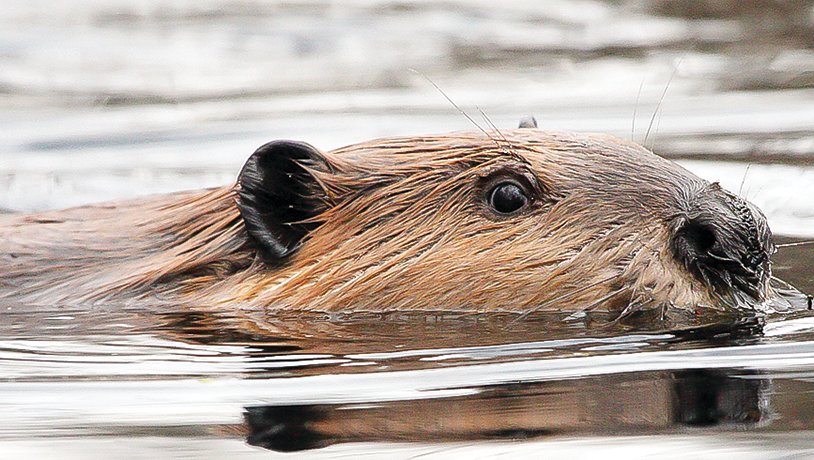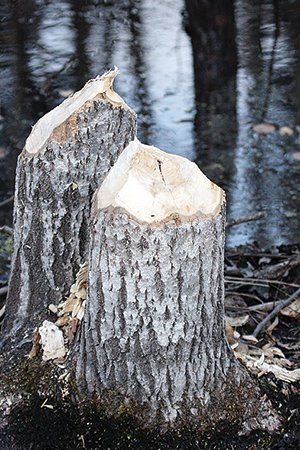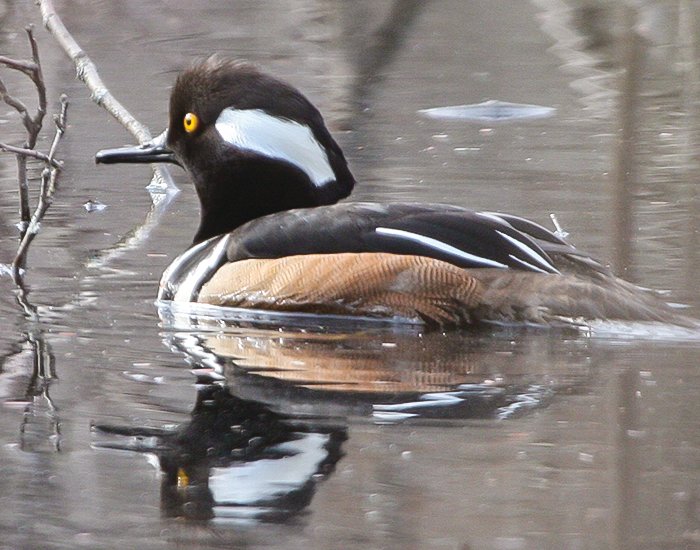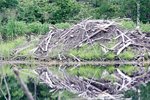Support the Timberjay by making a donation.
Study: Beavers play critical role
Researchers find that beavers are important for freshwater retention and ecological stability
REGIONAL— It’s no secret that northeastern Minnesota is rich in freshwater. Indeed, water is a near constant across the North Country landscape and a new study suggests one important …
This item is available in full to subscribers.
Attention subscribers
To continue reading, you will need to either log in to your subscriber account, or purchase a new subscription.
If you are a current print subscriber, you can set up a free website account and connect your subscription to it by clicking here.
If you are a digital subscriber with an active, online-only subscription then you already have an account here. Just reset your password if you've not yet logged in to your account on this new site.
Otherwise, click here to view your options for subscribing.
Please log in to continue |
Study: Beavers play critical role
Researchers find that beavers are important for freshwater retention and ecological stability
REGIONAL— It’s no secret that northeastern Minnesota is rich in freshwater. Indeed, water is a near constant across the North Country landscape and a new study suggests one important reason why that is so: beavers.
The study, just published in the journal Ecography, was led by Sean Johnson-Bice out of the UMD affiliated Natural Resources Research Institute in Duluth, with help from several other Minnesota biologists.
Beavers have long been known as a keystone species because their presence in an ecosystem is critical to the survival of many other species. While other animals, in addition to humans, are known to modify their environment, few species have the ability to re-engineer a landscape as dramatically as is the case with the beaver.
The latest study, which examined the impact of beaver along a series of watersheds along the North Shore of Lake Superior, found that beavers play a critical role in conserving freshwater and stabilizing ecosystems through the natural infrastructure they create through their dams.
Major findings of the study include:
Beavers are major drivers of water retention in ecosystems, suggesting that restoring beaver populations to ecosystems they no longer inhabit may be a valuable method that managers and conservationists could use for freshwater conservation objectives.
The longer beavers are present in an ecosystem, the more old and abandoned ponds help contribute towards storing water; although these abandoned ponds may no longer have beavers living in them, their dams can still hold back water.
At large spatial scales, beaver populations are resilient to moderate environmental and human disturbances.
Even though beaver populations within each of the five watersheds studied showed considerable variation in population size, water storage remained stable across the entire region. Essentially, changes in beaver population size in one watershed would be counterbalanced by changes in the other watershed(s), which helped stabilize water storage amounts across the North Shore of Lake Superior.
The study assessed the impact of beaver by observing aerial photos from the studied watersheds from the 1940s through 2017. Beaver population density increased significantly during that period, as a prohibition on beaver trapping in Minnesota, instituted in 1909, was allowing the species to recover from its near extirpation as a result of the fur trade era. Higher population density brought increased impacts from beaver activity, including a higher density of the freshwater ponds that they create. The study found that this beaver activity stored a tremendous amount of freshwater on the landscape, creating critical habitat for a wide range of species. It also found that those effects were long-lasting on the environment.
The study also confirmed that the size of beaver ponds tends to diminish over time after beavers recolonize areas, even as the number of ponds is likely to increase. That’s most likely because beavers initially select the best locations for impounding water, and have to rely on less-than-optimal locations once the best sites become occupied.
“Although there are many studies on how beavers change ecosystems, the scale of this study—spanning 70 years across five different watersheds—is really unprecedented and, as a result, gave us the unique opportunity to understand how beavers transform and engineer ecosystems over long time periods and large spatial scales,” said Tom Gable, coauthor of the study. “We think this work will be of value to many conservationists, scientists and citizens who want to understand how reintroduced or recovering beaver populations can positively affect their ecosystems.”
Understanding how ecosystems become more resilient is a key goal for ecologists because it can provide insights into how ecosystems may respond to human impacts and climate change. “This study suggests beavers, as ecosystem engineers, can be a biological tool that helps buffer ecosystems against disturbances and alterations,” noted the researchers.
But beavers need to return to ecosystems before they can play their critical role. Restoring beaver populations may seem like an unusual objective from the perspective of the experience in the North Country, where beavers are abundant. Yet their absence from many ecosystems, particularly in the American West, continues to be keenly felt by a whole host of fellow organisms that used rely on the aquatic ecosystems they created. Beaver reintroduction efforts are underway in several states, including Nevada, Washington, Utah, and Wyoming. An effort in Idaho, just after World War II, included dropping beavers in the mountainous backcountry by parachute, an effort that apparently helped return beavers to remote parts of that state.
Beaver populations tend to be more localized in the West than in Minnesota, given the more limited presence of water on the landscape. But that makes the presence of beaver and their water retention prowess all the more important in the West, which is why there’s a newfound appreciation among biologists and even the public about the many ecological services that beaver provide.















